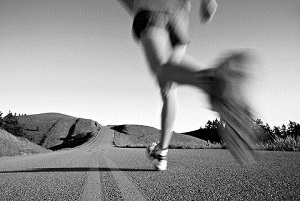


By GRETCHEN REYNOLDS, Columnist
March 14, 2012, 12:01 AM
For years, physicians and scientists have been aware that statins, the most widely prescribed drugs in the world, can cause muscle aches and fatigue in some patients. What many people don’t know is that these side effects are especially pronounced in people who exercise.
To learn more about the effect statins have on exercising muscles, scientists in Strasbourg, France, recently gave the cholesterol-lowering drug Lipitor to a group of rats for two weeks, while a separate control group was not medicated. Some of the rats from both groups ran on little treadmills until they were exhausted.
It was immediately obvious that the medicated animals couldn’t run as far. They became exhausted much earlier than the rats that had not been given statins.
The differences were even more striking at a cellular level. When the scientists studied muscle tissues, they found that oxidative stress, a measure of possible cell damage, was increased by 60 percent in sedentary animals receiving statins, compared with the unmedicated control group.
The effect was magnified in the runners, whose cells showed 226 percent more oxidative stress than exercising animals that had not been given statins.
Over all, the study data showed that working out while taking statins “exacerbated metabolic perturbations” in muscles, the study’s authors conclude. The drug made running harder and more damaging for the rats. The medicated running rats also had less glycogen or stored carbohydrates in their muscles than the unmedicated runners. And their mitochondria, tiny mechanisms within cells that generate power, showed signs of dysfunction; mitochondrial respiratory rates were about 25 percent lower than in the unmedicated runners.
Statins’ safety has come under considerable scrutiny in recent weeks. Last month, the Food and Drug Administration added safety alerts to prescribing information for statins, warning of risks for memory loss and diabetes, as well as muscle pain. (Read more about those concerns here.)
More than 20 million Americans are taking statins, and by most estimates, at least 10 percent of them will experience some degree of muscle achiness or fatigue. That proportion rises to at least 25 percent among people taking statins who regularly exercise, and may be 75 percent or higher among competitive athletes.
Why and how exercise interacts with statins to cause muscle problems remains unknown, in part because it’s more difficult to study molecular responses in people than in animals. (People generally dislike muscle biopsies.) But an eye-opening 2005 study of healthy young people taking statins showed that the gene expression profiles in their leg muscles after exercising were very different from those of volunteers not using statins. In particular, genes associated with muscle building and repair were “down-regulated,” or expressed less robustly, in the group using statins.
“It seems possible that statins increase muscle damage” during and after exercise “and also interfere somewhat with the body’s ability to repair that damage,” says Dr. Paul Thompson, the chief of cardiology at Hartford Hospital in Connecticut and senior author of the study.
The finding creates a worrisome conundrum for patients and their doctors. Statin users typically are at high risk for cardiovascular problems, making them the very people who could most benefit from regular exercise. But it may be that as a result of muscle problems, some people taking statins exercise less or not at all. “Lower energy is linked to less interest in activity,” says Dr. Beatrice Golomb, an associate professor of medicine at the University of California, San Diego, who is studying exercise habits in statin users, “and fatigue with exertion is linked to less actual activity.”
And less activity has its own consequences. Move less and you increase your risk of premature death and other undesirable outcomes, even if your cholesterol is under control.
So what does the emerging science about statins and muscles mean for someone who is taking or considering the drugs? “Statins save lives,” Dr. Thompson says. “Most people cannot control their cholesterol with diet and exercise alone.” He advises athletes to stop taking the drugs several days before a competition or strenuous workout, to avoid exacerbating muscle damage. But if you have intractably high cholesterol or a history of heart disease or stroke, he says, “you should be on statins.”
For people with lower heart disease risks, though, the benefits are equivocal. A 2010 study by Dr. Golomb and colleagues found that a majority of statin users reporting muscle problems “were in categories for which available randomized controlled trial evidence shows no trend to all-cause mortality benefit with statin therapy.” The patients were not at high risk of dying from heart disease, but were suffering from sore muscles and potentially a more sedentary life.
“Any indication of harm shifts the pendulum” toward risk, Dr. Golomb says, and should be considered before anyone decides whether to continue with statins.
The good news is that “muscle aches almost always disappear as soon as someone stops using statins,” Dr. Thompson says, and your vascular system may have benefited in the meantime.
“Statins are anti-aging for arteries,” he says. “If you take them, you’ll have younger arteries. Unfortunately,” he adds, “they are not anti-aging for muscles.”
The New York Times